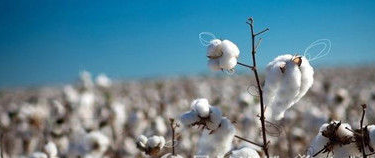The Demand For Clothing Market In India Is Very Large.
A comprehensive survey of the textile and garment industry in India can be divided into yarn and fiber (including natural and man-made) and processed fabrics (including
Wool spinning
, silk textiles, jute textiles,
Cotton textiles
And technical textiles), ReadymadeGarments (RMGs) and clothing.
As the second largest fiber producer in the world, India, the main production type is cotton, and produces all kinds of fabrics with up to 23 different varieties of cotton. The others are silk, hemp, wool and man-made fibres. Multivariate production makes India's fiber products occupy an important position in the world. With abundant labor force, it also makes the locals the world's purchasing center. Moreover, it is estimated that the market of textiles and garments in India will reach 221 billion US dollars in 2020.
In recent years, the most significant change in India's textile industry is the emergence of MMF. India has successfully sold innovative man-made fiber textiles to the world, and India man-made fibres in 2013.
Cotton yarn
The annual output has increased by 6%, the annual output of non cotton yarn has increased by 5%, and the annual output of the apparel industry has increased by 2%.
Under the official support of India and the India Garment Export Promotion Council (AEPC), from 2014 to 2016, the export of garments in India is expected to reach US $60 billion.
In fact, India is the third largest cotton producer in the world after Mainland China and the United States. It is also the largest jute producing country and the second largest producer of raw silk in the world.
India's textile related products, including Handlooms, account for 61% of the world's total output.
Textile exports accounted for 30% of India's total exports in 2013 and 27% of total foreign exchange through textile exports. It is estimated that this year (2015) will have a target of 220 billion US dollars.
Therefore, the growth and development of this industry directly affect the economic lifeline of India.
In India, the demand for clothing has increased due to economic growth and rising people's income. At present, the government has allowed foreign direct investment in the textile industry one hundred percent. From April 2000 to February 2013, foreign direct investment (FDI) amounted to US $1 billion 220 million. The global apparel factories including HugoBoss, LizClaiborne, Diesel and Kanz have all set up factories in India.
The global retail apparel giant has outsourced production to India, and the industry has also increased its value chain. In the next ten years, Africa and Latin America will be the main market for India textiles.
- Related reading
Practical Problems And Challenges Of Ethiopia In Developing Textile And Garment Industry
|
Cotton Imports Continued Weak, India Cotton Quotation Rebounded Against The Trend
|- Show show | Move Environmental Protection To T - ANDREA CREWS SS20:MOMENTUM Conference Held
- neust fashion | "SHOW ME THE MONEY" X Adidas New Series Of Pictures Released!
- Expert commentary | Fundamentals Remain Bad Polyester Filament Market Will Be Running Weak
- Daily headlines | Stepping Into The New Era Of "Fashion Upgrades", The "Red Gang Tailor" Has Opened Its Colorful Future.
- Daily headlines | "2019 Changan CS75 PLUS" China Chongqing International Fashion Week Opens
- Company news | Step On The "Hot Wheels" Of AI Technology. Xiao Cloth Intelligent Quality Inspection Robot Will Appear In Intertextile Autumn Winter Noodles Accessories Exhibition.
- Company news | Big Mac Adds Engine Of Expansion! Take You To Know The World'S Largest PTA Factory Under Hengyi And Rongsheng.
- Company news | Focus On Down Jacket For 43 Years, Milan Fashion Week Strongest Team Gathered In Bosideng Show.
- neust fashion | Little Sister Came To See, Early Autumn Must Buy Knitted Sweater Recommendation!
- neust fashion | CIFW2019: Liu Wei'S Special Show
- By Way Of Southeast Asian Countries, The GSP Policy Of Developed Countries Can Be Enjoyed.
- Ganjingzi District Of Dalian City Strives To Build A Public Service Gathering Place For Talents
- Dalian City Common Distribution Center Construction Is Progressing Smoothly
- Dalian Held A Symposium On European And American Joint Ventures And Enterprises
- Dalian: Opinions On Advancing The New Round Of Opening Up To The Outside World
- Obvious Changes In Shenyang'S Industrial Structure
- Shenyang Shenhe District Streets Create "Employment And Entrepreneurship" Wechat Platform
- Shenyang: More Than 30 Electricity Providers Gather "Wisdom East Middle Street"
- 沈陽市工商局八舉措助力穩增長促振興
- Gao Li International Held The "Internet +" Commercial Real Estate Forum In Shenyang.


